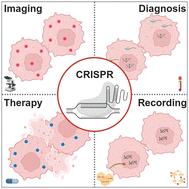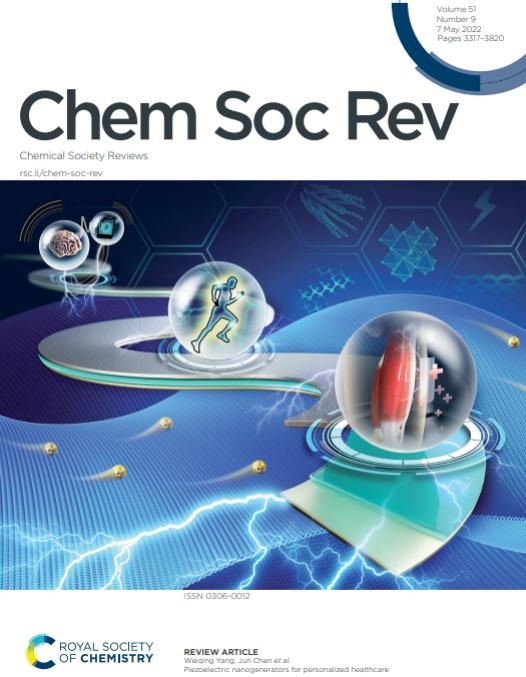体内CRISPR生物传感
IF 39
1区 化学
Q1 CHEMISTRY, MULTIDISCIPLINARY
引用次数: 0
摘要
体内生物传感对于实时监测生物过程和生物体内疾病进展至关重要。利用CRISPR效应物的可编程特异性和多功能性,基于CRISPR的体内生物传感已成为复杂生理环境中高度敏感和靶向特异性检测的强大工具。本文综述了这些先进传感器的基本原理、设计策略和生物分析应用,重点介绍了三种关键方法:crispr介导的高效体内序列识别,crispr驱动的反式切割活动用于信号放大,以及使用碱基编辑器和引物编辑器进行传感偶联遗传调节。关键的设计参数-包括递送策略,细胞内动力学和信号放大机制-详细讨论。我们进一步强调了广泛的应用,包括体内DNA/RNA成像,蛋白质和小分子定量,基因控制药物释放,动态信号记录,环境反应传感,以及胚胎发生和肿瘤进展中的谱系追踪。本文还讨论了当前的挑战和概述了未来的方向,强调了体内CRISPR生物传感在基础生物学和临床翻译方面的变革潜力。本文章由计算机程序翻译,如有差异,请以英文原文为准。

In vivo CRISPR biosensing
In vivo biosensing is essential for real-time monitoring of biological processes and disease progression within living organisms. Leveraging the programmable specificity and multifunctionality of CRISPR effectors, in vivo CRISPR-based biosensing has emerged as a powerful tool for highly sensitive and target-specific detection in complex physiological environments. This review presents the fundamental principles, design strategies, and bioanalytical applications of these advanced sensors, focusing on three key approaches: CRISPR-mediated highly efficient in vivo sequence recognition, CRISPR-driven trans-cleavage activity for signal amplification, and the use of base editors and prime editors for sensing-coupled genetic modulation. Critical design parameters—including delivery strategies, intracellular dynamics, and signal amplification mechanisms—are discussed in detail. We further highlight a broad range of applications, including in vivo DNA/RNA imaging, quantification of proteins and small molecules, gene-controlled drug release, dynamic signal recording, environmental response sensing, and lineage tracing in embryogenesis and tumor progression. The current challenges and outlining future directions are also discussed, underscoring the transformative potential of in vivo CRISPR biosensing in both fundamental biology and clinical translation.
求助全文
通过发布文献求助,成功后即可免费获取论文全文。
去求助
来源期刊

Chemical Society Reviews
化学-化学综合
CiteScore
80.80
自引率
1.10%
发文量
345
审稿时长
6.0 months
期刊介绍:
Chemical Society Reviews is published by: Royal Society of Chemistry.
Focus: Review articles on topics of current interest in chemistry;
Predecessors: Quarterly Reviews, Chemical Society (1947–1971);
Current title: Since 1971;
Impact factor: 60.615 (2021);
Themed issues: Occasional themed issues on new and emerging areas of research in the chemical sciences
 求助内容:
求助内容: 应助结果提醒方式:
应助结果提醒方式:


